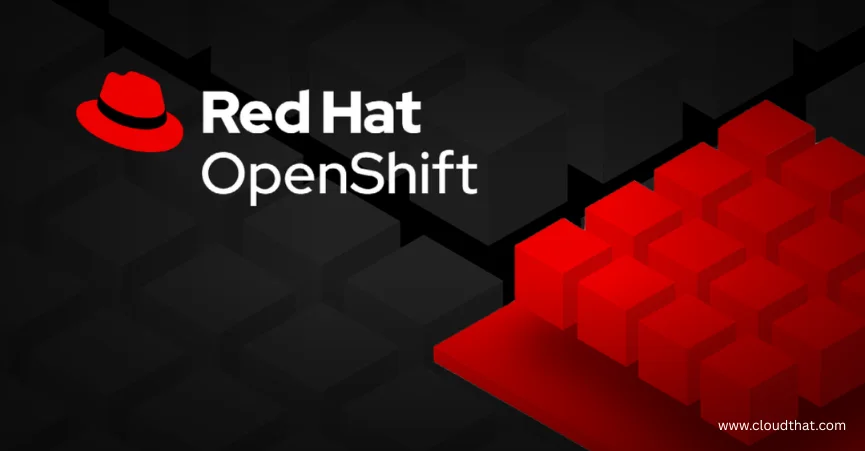|
Voiced by Amazon Polly |
Overview
OpenShift is Red Hat’s enterprise-grade Kubernetes platform designed for deploying and managing containerized applications at scale. Unlike vanilla Kubernetes, OpenShift adds developer-friendly tools, enterprise security, and integrated CI/CD pipelines to simplify management and accelerate application delivery.
OpenShift provides a consistent hybrid and multi-cloud environment, allowing teams to run workloads on-premises, in public clouds, or in hybrid setups. Its security features, including built-in RBAC, SELinux policies, and integrated OAuth, make it ideal for enterprises with strict compliance requirements.
By combining container orchestration with developer workflows and enterprise security, OpenShift helps organizations modernize legacy applications, deploy microservices, and streamline DevOps practices.
Pioneers in Cloud Consulting & Migration Services
- Reduced infrastructural costs
- Accelerated application deployment
Key Features
- Kubernetes-Based: Full Kubernetes API support with enhanced enterprise features.
- Developer Tools: Integrated Source-to-Image (S2I), pipelines, and developer consoles.
- Security & Compliance: Built-in RBAC, SELinux, and network policies for secure deployments.
- Hybrid & Multi-Cloud Support: Run workloads on-prem or on public clouds like AWS, Azure, and GCP.
- Integrated CI/CD: Pipelines built on Tekton for automated build, test, and deploy workflows.
- Monitoring & Logging: Prometheus/Grafana and Elasticsearch/Fluentd/Kibana (EFK) stacks integrated.
- Operator Framework: Simplifies deployment and management of complex applications.
Steps to Implement OpenShift
Step 1: Provision Infrastructure
- Decide deployment target: on-prem, OpenShift Dedicated, or OpenShift on cloud (AWS, GCP, Azure).
- Provision compute nodes for master, worker, and infrastructure roles.
- Ensure networking, firewall, and DNS requirements are configured.
Step 2: Install OpenShift
- Download the OpenShift installer from Red Hat.
- Initialize cluster installation:
|
1 |
openshift-install create cluster --dir=mycluster --log-level=info |
- Validate cluster by logging into the OpenShift console:
|
1 |
oc login https://<cluster-api> |
Step 3: Configure Projects and Namespaces
- Create separate projects for development, staging, and production:
|
1 |
oc new-project dev-apps |
- Apply RBAC policies for teams and services:
|
1 |
oc create rolebinding dev-team-binding --clusterrole=edit --user=devuser --namespace=dev-apps |
Step 4: Deploy Applications
- Use Source-to-Image (S2I) to build images directly from source code:
|
1 |
oc new-app nodejs~https://github.com/myrepo/myapp |
- Deploy containerized applications via OpenShift templates or Operators.
- Configure service routes for external access:
|
1 |
oc expose svc/myapp |
Step 5: Integrate CI/CD Pipelines
- Set up OpenShift Pipelines (Tekton) for build/test/deploy automation.
- Connect to Git repositories and container registries.
- Implement automated rollouts, approval gates, and rollback policies.
Step 6: Networking and Security Configuration
- Apply NetworkPolicies to restrict pod communication.
- Configure TLS for routes and secure service-to-service communication.
- Enable auditing to track changes and access patterns.
Handle Failures & Monitoring
High Availability
- Deploy multiple master nodes to ensure control plane resiliency.
- Worker nodes automatically reschedule pods if a node fails.
- Use Persistent Volumes and StorageClasses for resilient data storage.
Monitoring
- OpenShift integrates Prometheus for metrics collection.
- Grafana dashboards visualize cluster and application metrics.
- Logs are centralized using the EFK (Elasticsearch, Fluentd, Kibana) stack.
Recovery
- Utilize OpenShift Backup and Restore (via Velero or OpenShift tools) for disaster recovery purposes.
- Configure PodDisruptionBudgets to prevent accidental downtime during maintenance.
- Monitor cluster health using oc get nodes and oc get pods.
Use Cases
- Enterprise Microservices Deployment
- Multi-tenant environments for finance, healthcare, and e-commerce.
- Hybrid Cloud Applications
- Deploy workloads consistently on-premises and across multiple clouds.
- Automated CI/CD Workflows
- Rapid application delivery with integrated pipelines.
- Secure Multi-Tenant Environments
- RBAC and NetworkPolicies isolate teams and workloads securely.
- Complex Application Management
- Operators simplify the deployment and updates of stateful applications, such as databases, message brokers, and caches.
Conclusion
Drop a query if you have any questions regarding OpenShift and we will get back to you quickly.
Empowering organizations to become ‘data driven’ enterprises with our Cloud experts.
- Reduced infrastructure costs
- Timely data-driven decisions
About CloudThat
CloudThat is an award-winning company and the first in India to offer cloud training and consulting services worldwide. As a Microsoft Solutions Partner, AWS Advanced Tier Training Partner, and Google Cloud Platform Partner, CloudThat has empowered over 850,000 professionals through 600+ cloud certifications winning global recognition for its training excellence including 20 MCT Trainers in Microsoft’s Global Top 100 and an impressive 12 awards in the last 8 years. CloudThat specializes in Cloud Migration, Data Platforms, DevOps, IoT, and cutting-edge technologies like Gen AI & AI/ML. It has delivered over 500 consulting projects for 250+ organizations in 30+ countries as it continues to empower professionals and enterprises to thrive in the digital-first world.
FAQs
1. How does OpenShift differ from vanilla Kubernetes?
ANS: – OpenShift adds enterprise features, integrated CI/CD, RBAC, security policies, and developer tools to Kubernetes, making it production-ready out of the box.
2. Can OpenShift run on any cloud provider?
ANS: – Yes, OpenShift supports AWS, GCP, Azure, and on-prem deployments, offering hybrid and multi-cloud flexibility.

WRITTEN BY Riyazuddin
Riyazuddin works as an Associate Architect – Infra, brings over 15+ years of experience in DevOps, System Design, Networking, and Programming. Skilled in AWS, Azure, Terraform, Docker, Kubernetes, Jenkins, Openshift, Ansible, and Python, he designs scalable, secure systems and drives automation through cloud-native architectures and IaC. Known for his analytical mindset and leadership, he mentors teams and delivers high-impact, enterprise-ready solutions aligned with business goals.


 Login
Login


 October 6, 2025
October 6, 2025 PREV
PREV









Comments